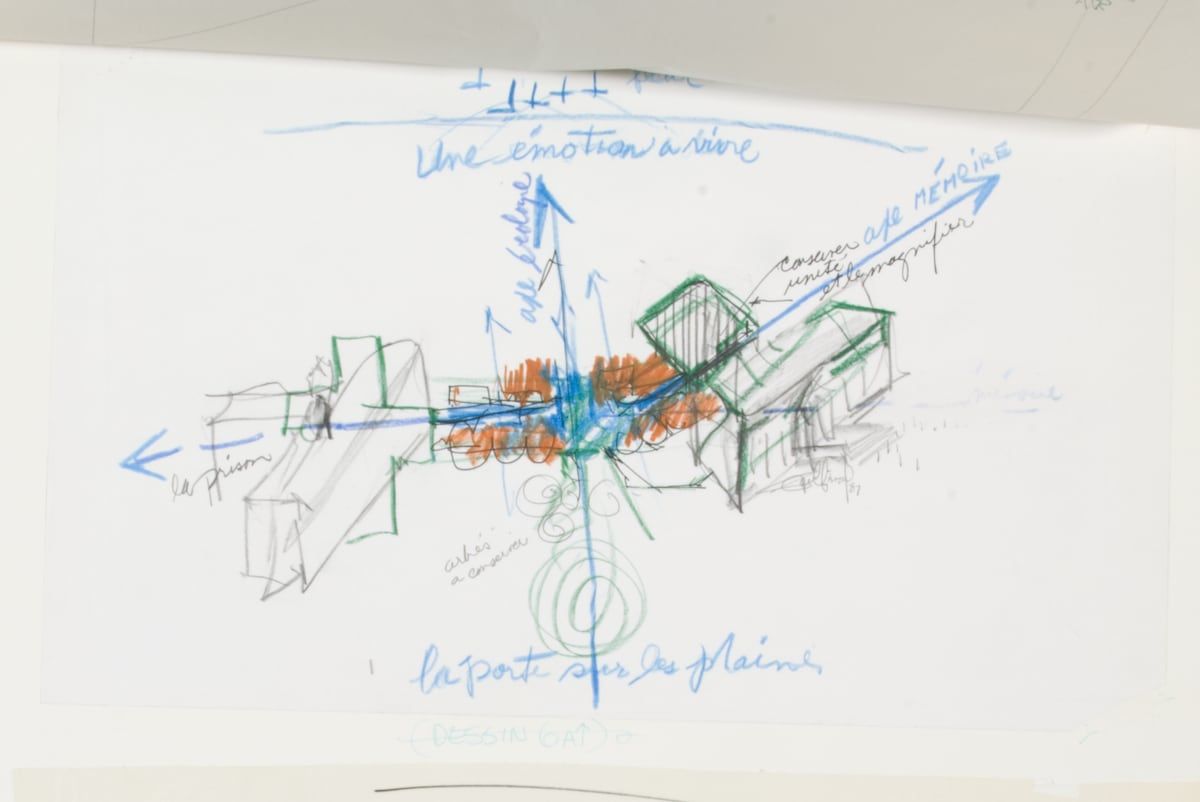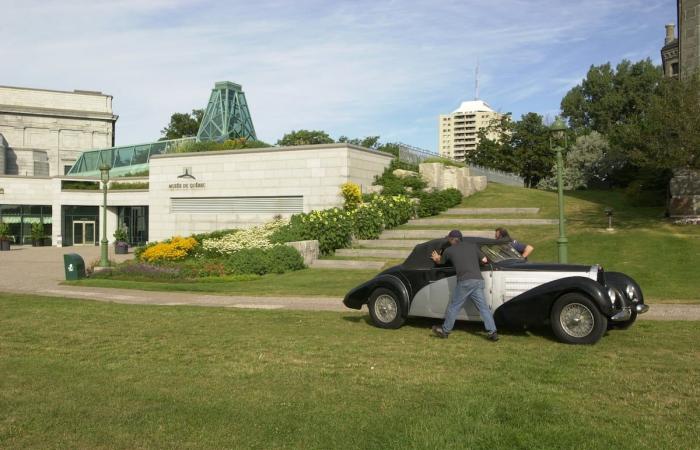Work is progressing well at the end of Wolfe-Montcalm Avenue. The fences were erected and the earth moved. The glass skylight, which sat above the building, was completely removed.
In the weeks and months to come, what was already the “Grand Hall of the Musée du Québec” will slowly fade away while the much-anticipated Espace Riopelle will rise.
If this is the start of a new chapter for the museum complex, it is also the end of an era for those who, over the last 33 years, have crossed the central pavilion on a daily basis.
Some may have forgotten it since the arrival of the Lassonde, but the “Grand Hall” was at the heart of the MNBAQ’s activities, the gateway to the museum. Everything was ideal for living in the space inaugurated in 1991.
The inauguration of the Great Hall attracted many curious people in 1991. (National Museum of Fine Arts of Quebec)
«[Voir le chantier]it takes me back to the past. I think a lot about all the festive events we had under the skylight. […] The opening night [du pavillon] was by invitation, but there were hundreds and hundreds of people!”, recounts with joy Claire Lehouiller, office agent at MNBAQ.
Vast and well designed to meet the needs of the time, the venue hosted a range of more traditional events such as press visits, openings and even “museum balls”. Then others are more informal – but just as festive – like “Christmas parties” for employees.
Over time, the Great Hall has also vibrated with the excitement of school groups, the electricity of a “rave” or even the excitement of election evenings, hosting polling stations on several occasions.
Jean-Paul Riopelle’s collector’s cars have already been exhibited in the “Grand Hall of the Musée du Québec”. (National Museum of Fine Arts of Quebec)
The space also served as a showcase for the works of local and international artists, such as the BGL collective, the artist René Derouin and Claudie Gagnon who made the skylight into a chandelier.
A unique attachment
With 38 years of experience behind the tie, Nathalie Thibault has also seen events of all kinds. But the curator of the archives will quickly point this out in an interview at Soleil : this is not the first time that the MNBAQ map has been redesigned.

Claire Lehouiller, Linda Tremblay and Nathalie Thibault all three keep precious memories linked to the central pavilion. (Caroline Grégoire/The Sun)
“Me, what makes me emotional, [c’est le souvenir de] all the generations of people I have known as employees here and who have participated in research on the exhibitions and collections. It’s a bit of all that that disappears when we see certain buildings leave for something new.
“But, at the same time, we have to embark on this new thing! Experiencing the adrenaline of a new pavilion is always exciting,” shares Ms. Thibault, who is also responsible for document management and digital distribution of the collections.
On the same note, Claire Lehouiller, who has worked at the MNBAQ for more than 34 years, remembers her daughter, very young, crossing the central pavilion with her summer camp, many years ago…
Now responsible for press relations for the MNBAQ, Linda Tremblay wears two different hats when the time comes to delve into her memories of the central pavilion.
“My attachment to the museum dates back 33 years anyway. That’s twenty years as a cultural columnist covering exhibitions and museum events. […]
“I have had many great successes like Rodin in Quebec. I came to see the exhibition three times. There are evenings when [le musée] had extended opening hours, including on the last evening, until midnight. […] It was amazing the number of people who wanted to see this exhibition.», she shares.
«Pour Rodin in QuebecI remember, I welcomed 120 journalists under the skylight!”, remembers Ms. Lehouiller, laughing.
Modern architecture
If concrete blocks are less popular today, the central pavilion was quite fashionable for its time, at the beginning of the 90s. In particular with its large windows, its skylight and its objective of integrating into the surrounding nature.
The axes of the building, anchored between the Gérard-Morisset and Charles-Ballairgé pavilions, were also imagined by Mr. Cyril Simard, an architect by training and director of planning and development of the Museum, at the end of the 1980s.

In 1987, Cyril Simard, then director of planning and development at the Museum and himself an architect, drew some sketches of what would become the central pavilion of the Musée du Québec. (National Museum of Fine Arts of Quebec)
Ticket office, restaurant, rest area, toilets, etc. : the pavilion and its services had been designed to meet the needs of the public, but also of the museum teams by grouping together, in the basement, all the reserves in the same place… and by offering “the most beautiful terrace in town”.
And you, do you have any memories related to the Grand Hall of the Musée national des beaux-arts du Québec? We want to hear from you in the “comments” section below.









